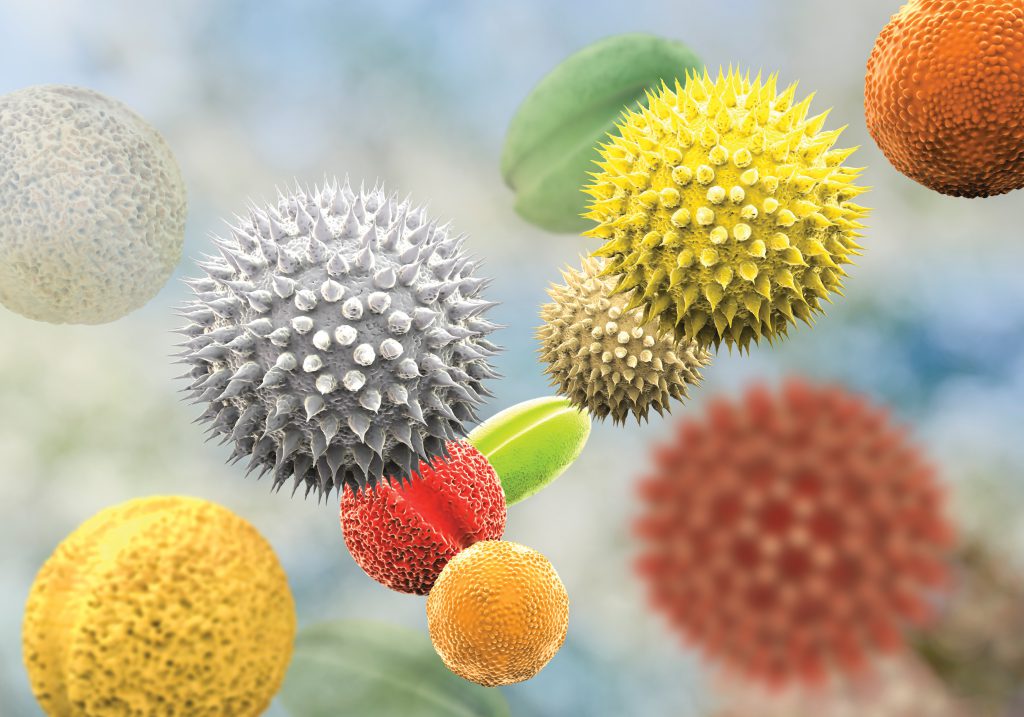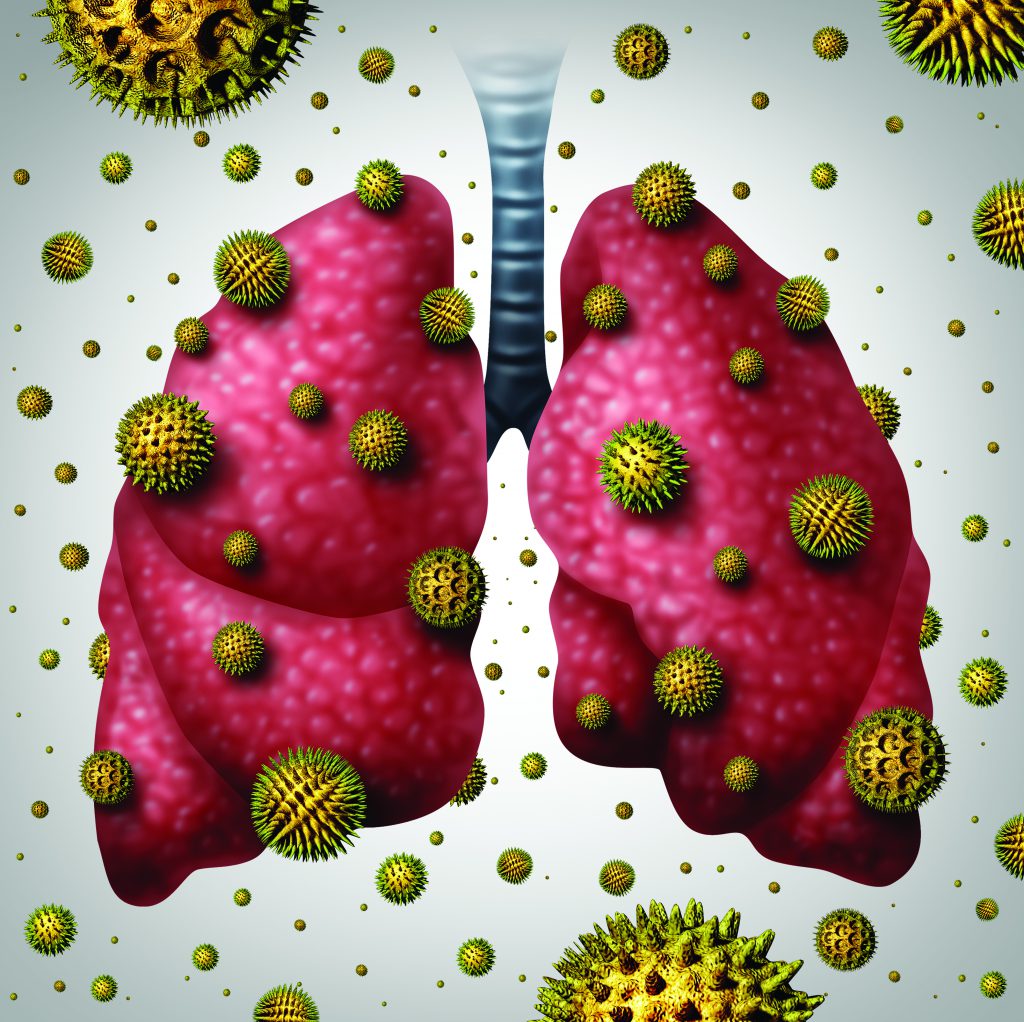BreezoMeter – Mapping Allergies: A Modern Approach to Pollen Prevalence Reporting
For seasonal allergy sufferers, the warm spring weather that delights most comes with unpleasant symptoms and breathing difficulties. However, most methods of predicting pollen abundance are not precise enough to help the afflicted avoid high pollen areas. BreezoMeter is a bold young company that has made waves using big data innovations to change how we look at and understand pollen data and air pollution.
Painful sinus headaches, itchy eyes and struggling to breathe through a congested nose – for millions of people worldwide, seasonal allergies due to pollen are an unfortunate reality. In the United States alone, the Centers for Disease Control and Prevention estimates that the afflicted spend $18 billion every year on allergy medications to keep symptoms at bay. For those with more serious sensitivities such as asthma, high pollen counts can increase the risk of a medical emergency. When combined with air pollution, high pollen levels add to a perfect storm of irritants that reduce allergic people’s quality of life and increase their risk of health complications.
BreezoMeter is an innovative company that has transformed how air quality is reported and understood worldwide. Their big data platform uses proprietary algorithms that use measurements from government monitoring stations, meteorological, satellite and traffic data, to create comprehensive, real-time air quality maps of air pollution around the globe.
BreezoMeter’s technology can describe air quality variation with precision down to a city block, providing health conscious users with recommendations and predictions for outdoor activities in areas that will allow them to breathe easy. After years of significant research, development and investment on the back of increased industry demand, the company is now providing location-based pollen levels. This key component of air quality has previously not received the same level of monitoring as pollution has in most countries, despite affecting millions of people’s health.
The Problem with Pollen
Pollen grains are the male reproductive cells of plants, which are emitted by flowers in the hope that they will find and fertilise another flower of the same species. These pollen grains can either be transported through the wind or on the bodies of insect pollinators.

People that are allergic to pollen are most commonly affected by the pollen of plants that adopt a wind pollination strategy. Many trees and grasses use this tactic, producing massive amounts of pollen to compensate for a mode of transmission that is not particularly accurate and relies heavily on luck. Anyone living in an area with abundant evergreen trees or grassland has probably enjoyed the experience of finding their car coated in the powdery yellow substance when the weather starts to warm up.
Pollen season is defined as the periods that these plants release pollen in a given region, and typically varies from year to year depending on environmental factors, such as temperature, rainfall, and day length. People with pollen allergies experience a range of near-constant symptoms during pollen seasons, often known as seasonal allergies or hay fever. These allergies are common, with a prevalence of over 10% in many industrialised nations, including 50 million seasonal allergy sufferers in the US alone, but their origins are not fully understood. Another challenge with pollen is that it can affect people’s health immediately after exposure. In fact, one study found that even short-term exposure to a modest elevation in pollen levels (17.6 grains per cubic metre) increased the incidence of asthma attacks by 54%. There is likely a genetic component – however, there also appears to be a large environmental component. Pollen allergy rates are much higher in urban areas, and some researchers predict that airway irritation due to urban air pollution may be a contributing factor to the development of pollen sensitivity.
Those with pollen sensitivities are also usually sensitive to air quality as a whole and are in for particularly bad symptoms when both pollution and pollen rates are high. This mixture can be deadly for asthma sufferers, or people with similar respiratory problems. Even for those without specific pollen allergies, air pollution drastically impacts health and the higher particulate burden in the air can act as an irritant.
Air Quality Quagmire
Understanding air quality fluctuations is important but can be difficult under ever changing conditions. To further complicate the tracking of seasonal air quality, climate change is playing a role in shifting pollen seasons for many of the major airborne pollen producing plants. Many plants responsible for some of the worst seasonal allergies, such as ragweed, are thriving in the heightened atmospheric carbon dioxide concentrations associated with climate change.
Studies investigating both ragweed and loblolly pine have found that these plants produce 132% more pollen at current carbon dioxide levels than pre-industrialisation levels and this is expected to increase as concentrations continue to rise. Some experts predict that pollen levels will have fully doubled from current counts by 2040, meaning greater suffering for those with allergies. In addition to producing more pollen, many plants are flowering over longer periods of time, increasing both the length and severity of pollen seasons, particularly in climates where a winter to spring transition occurs.
Despite the role of pollen in human health and environmental quality, it is typically not well monitored by the majority of world governments. As a natural phenomenon, pollen often garners less attention than sources such as car and factory emissions, which can be more easily controlled by government regulations. Since pollen does not affect everyone and is not present all year round, there is also a perception among many government officials that pollen is a fleeting concern that does not carry enough impact to warrant tracking.
However, pollen allergies are on the rise, particularly in urban areas, and an increasing number of people are expressing interest in knowing when pollen levels will impact their health and the health of their families. For those with pollen sensitivities, particularly asthma, awareness of current air quality measures that include pollen rates could help them plan happy, healthy outdoor activities accordingly. BreezoMeter is working to make this a reality for allergy sufferers around the world.

Changing the Pollen Data Landscape
One of the greatest barriers to obtaining accurate pollen counts in a timely manner is the time and labour-intensive nature of most methods of pollen quantification. Currently, most major cities that track pollen do so using pollen counting stations. Of the cities that have some sort of pollen monitoring program, most only have one station. These stations operate a volumetric air pump – a machine that moves air over sticky films over a 24-hour period, catching any airborne particles. After 24 hours, a laboratory technician uses chemical stains to makes slides of the caught particles, and a certified pollen identification specialist then uses a microscope to count a subset of all pollen types on each slide, depending on the specialist’s ability to recognise different species.
This means that standard counts are often delayed and rely upon numerous highly trained individuals to interpret. This is why many countries do not perform comprehensive pollen sampling across short timescales. In places that do perform measurements, pollen counts are often performed only on weekdays or once a week and are generalised over a large area. However, much like air pollution, changing local conditions can create pockets of heavy pollen that change quickly during the day or are moved to other areas by weather patterns.
In Europe, BreezoMeter bases its pollen reports on the European Union’s Copernicus Atmosphere Monitoring Service (CAMS) to combine pollen predictions with big data in order to depict how and when pollen will move across different areas on a fine scale. BreezoMeter integrates CAMS models with their algorithm, which combines information that estimates where pollen will originate and describe its movement through the air. The CAMS model captures interactions between land use and weather movements to predict where pollen will stay airborne and where it will accumulate on land, while also predicting how air moves across different grids of an area. Also incorporated in the model is how different kinds of pollen flow in airstreams.
When combined with the EU CAMS pollen forecasts, BreezoMeter’s algorithms depict how pollen is moving across Europe in high detail. This information is translated into a simple pollen count index (PCI) of low, medium, high and very high, allowing allergy sufferers to easily check where they are most likely to be able to enjoy symptom-free activities. PCIs are based on the number of pollen grains in a cubic meter of air, and BreezoMeter provides regionally specific definitions for the areas the company operates. In Europe, the PCI integrates pollen indexes from multiple countries, accounting for plant species present and their likelihood to cause health effects.

Next Generation Pollen Counts
Leveraging novel pollen counts collected by the Japanese government, BreezoMeter is using technology and big data to transform how pollen is reported on a grand scale. Rather than relying on manual counting, Japan has installed hundreds of high-tech automatic pollen-counting sensors throughout the country.
These small stations rely on novel technology to provide real-time pollen identification and counts. Tiny streams of air are pumped through the machines and blasted with a beam of light. Sensors capture the characteristics of the light bouncing off the particles, and algorithms quickly identify if the sample is pollen. These results are further validated by Japan’s air quality authorities using traditional methods. In Japan, the PCI is determined by the Tokyo Metropolitan Institute of Public Health using simple and intuitive pollen parameters.
BreezoMeter’s algorithms receive fine scale input as conditions change and constantly adjust their output based on real-time data. With this vast and timely data source, pollen maps are very responsive to sudden changes and are able to update on an hourly basis. Seasonal allergy sufferers in Japan can see where they’ll encounter pollen with incredible accuracy.

Changing the Game for Allergy Sufferers
BreezoMeter’s big data approach to pollen forecasting is completely transforming how governments, corporations and individuals interact with pollen data. With up-to-date, location-based pollen data, those with severe sensitivities for whom pollen can be dangerous, such as people with asthma, can now enjoy outdoor activities when they know pollen levels are low. BreezoMeter’s technology allows them to be aware and prepared on days where pollen activity could cause them harm.
Governments and corporations can identify areas that would benefit from increased air filtration systems and adjust strategies to match seasonal changes. Unlike traditional monitoring systems that provide broad regional measurements with a 24-hour delay, BreezoMeter is able to provide hourly pollen abundance data with a resolution of 250 to 500 metres. This allows people that suffer from allergies to make informed decisions that can improve their health and quality of life. Using BreezoMeter’s hourly pollen data, people can decide when they should go outside, and where they should do their outdoor activities.
BreezoMeter’s pollen modelling is even more powerful when combined with the company’s proprietary air pollution algorithms, providing a comprehensive and fine scale map of air quality that captures the full picture of factors.
Founded in 2014 when a small group of environmental and software engineers came together to address the problem of how they could find healthy, clean places to live, considering that some of their family members suffered from respiratory diseases, the company is driven by a commitment to helping people live healthier lives through cleaner environments. Their simple-to-integrate API allows businesses to integrate air pollution and pollen data for commercial use, to develop better air purifiers, connected medical devices, smart homes, and lifestyle products that help people breathe easier worldwide.
About BreezoMeter
BreezoMeter is the world’s leader in location-based, real-time air quality and pollen data, covering more than 5.5 billion people worldwide in more than 80 countries, and improving health by providing intuitive and actionable data. Using governmental sensors, satellites, local weather, transportation dynamics and other sources, BreezoMeter gives companies the tools to increase user engagement and sales, and impacts lives with accurate data, including pollen levels, pollutant concentrations and forecast. BreezoMeter offers its data via API to enterprises of diverse industries, including smart homes, air purifiers and HVAC, fitness and lifestyle, cosmetics, automotive, and medical device and health technologies.
Contact BreezoMeter
Israel (HQ):
HaMeginim Ave 35, Haifa, Israel, 3326509
San Francisco (North America Office):
1275 Mission Street, San Francisco, California 94103
E: Sales@breezometer.com
W: www.breezometer.com


